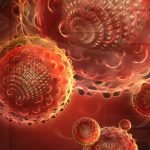Enhancing Bioavailability of Quercetin
Praevenire
Jeremy Appleton, ND
Quercetin is a widely distributed flavonoid in plants. Human beings regularly consume quercetin in a variety of fruits, vegetables, and herbal medicines. Well-known dietary sources include onions and apples; the main source of rutin (from which supplemental quercetin is derived) is the flower of Sophora japonica. The term quercetin is sometimes incorrectly used to denote the main forms of quercetin glucosides found in plants (ie, the glucosides). The most common supplement form of quercetin is actually an aglycone that has significantly lower bioavailability and is not found extensively in nature.
In the human body, quercetin has numerous salutary biological activities, including antiproliferative effects on several cancer cells,1-3 anti-inflammatory and antiallergic effects,4 antioxidative activity,5 and cardioprotective effects.6 In clinical research, supplementation of quercetin in hypertensive patients for 28 days significantly reduced blood pressure.7 However, orally administered quercetin aglycone is poorly absorbed, and the bioavailability of quercetin administered in capsule form to human beings was reported to be less than 1%.8
Several formulation strategies have been used to improve the dismal bioavailability of quercetin. For example, one pharmacokinetic study9 in rats showed a 5.7-fold increase in bioavailability when quercetin was administered in a solid, lipid nanoparticle as an oral delivery carrier.
Quercetin is generally found in plants as glycosides (eg, glucosides and rutinosides). These glycosides have better solubility in water than quercetin aglycone due to the more hydrophilic nature of their sugar moieties.10,11 Until the last few years, quercetin glucosides (eg, isoquercetin and isoquercitrin) were not available as dietary supplements. A strategy to further increase water solubility of quercetin glucosides is glucosyl conjugation via a simple enzyme process.12 Several glucosides of quercetin can be prepared by enzymatic synthesis to enhance the water solubility, the most successful example of which is alpha-glycosyl isoquercitrin (also known in the literature as enzymatically modified isoquercitrin).13-16
Bioavailability of Alpha-Glycosyl Isoquercitrin
Researchers at Nagoya City University in Japan evaluated the bioavailability of several quercetin glycosides in rats, comparing compounds with different sugar moieties.15 The following were orally administered to rats: quercetin, quercetin-3-O-rutinoside (rutin), and quercetin-3-O-glucoside (isoquercetin, referred to as isoquercitrin in this study) in suspension, as well as quercetin-3-O-maltoside, quercetin-3-O-gentiobioside, alpha-monoglucosyl rutin, alpha-oligoglucosyl rutin, and alpha-glycosyl isoquercitrin (referred to as enzymatically modified isoquercitrin in this study) dissolved in water. Bioavailability (F value) was calculated from the concentrations of total quercetin in plasma from 0 to 12 hours after the administration. The F value of quercetin was 2.0%, and the F values of isoquercetin, quercetin-3-O-maltoside, and alpha-glycosyl isoquercitrin were 12%, 30%, and 35%, respectively. Thus, alpha-glycosyl isoquercitrin was 3 times more bioavailable than isoquercetin and 17.5 times more bioavailable than quercetin aglycone.
Of clinical note, quercetin and its methylated metabolites were observed in plasma as early as 15 minutes following oral administration of alpha-glycosyl isoquercitrin.15 This suggests that clinical “demonstrability” (ie, what the patient might feel as a result of taking the supplement) of alpha-glycosyl isoquercitrin is significantly faster than other forms. By comparison, prior research has shown that oral quercetin aglycone reaches the plasma in 1 to 4 hours due to its slow absorption via passive diffusion.17,18 The superior absorption of alpha-glycosyl isoquercitrin over isoquercetin can be explained by the fact that enzymatic treatment, in general, and alpha-glycosylation, in particular, effectively enhances the bioavailability of quercetin glucosides in humans.16,19
Clinical Uses
Japanese researchers investigated the effects of alpha-glycosyl isoquercitrin on allergy symptoms caused by exposure to Japanese cedar pollen in 2 double-blind studies.20,21 In each study, subjects were given 100 mg of alpha-glycosyl isoquercitrin or placebo for 8 weeks, starting 4 weeks before the beginning of pollen exposure. Subjective measures, activities of daily living, and the use of drugs were tracked. Quality-of-life scores were obtained every 4 weeks. In both studies, alpha-glycosyl isoquercitrin was effective for ocular symptoms (itchy, tearing eyes) but had no significant effects on nasal airflow.
Numerous preclinical studies have suggested anticancer effects of quercetin. Alpha-glycosyl isoquercitrin has also been investigated for antiproliferative effects, most extensively in the liver.16,19-26 To investigate the antiproliferative effects of alpha-glycosyl isoquercitrin, for example, one group of researchers fed rats a diet containing phenobarbital (a hepatocellular tumor promoter) for 8 weeks, with or without added alpha-glycosyl isoquercitrin in the drinking water.22 One week after phenobarbital administration, the induced increase in the number and area of positive foci and proliferating cell antigens was significantly suppressed by the flavonoid. The authors suggest potential mechanisms for this protective effect, including inhibiting nuclear translocation of constitutive active/androstane
receptors. Other research has also found hepatocellular antiproliferative effects of alpha-glycosyl isoquercitrin in animals.23-26 The glycosylated flavonoid has demonstrated cardioprotective effects in animals as well.27 Human clinical trials are needed to confirm these promising preclinical results.
Dosing of Quercetin Aglycone
Typical dosages of quercetin aglycone have been in the range of 400 to 1500 mg/d.28 Optimal intake remains unknown, largely because of the paucity of clinical efficacy data. Based upon the bioavailability research cited herein, the recommended dosages of isoquercetin and alpha-glycosyl isoquercitrin required to achieve the comparable quercetin plasma values would be much lower. Approximate, conservative estimates would put these dosages at 70 to 250 mg/d for isoquercetin and 25 to 90 mg/d for alpha-glycosyl isoquercitrin.
 Jeremy Appleton, ND is a licensed naturopathic physician with an extensive background in natural medicine and education. He is a graduate of Reed College and National College of Natural Medicine (both in Portland, Oregon) and did his residency at Bastyr University (Kenmore, Washington), where he was also on the faculty. Dr Appleton left his private practice in 1998 to join Tyler Encapsulations (Gresham, Oregon) and to serve as nutrition department chair at National College of Natural Medicine, where he taught for 5 years. A dynamic public speaker, Dr Appleton has lectured extensively around the world on topics in nutrition, botanical medicine, and dietary supplement quality issues. He is the author of several books and hundreds of articles on natural medicine. Dr Appleton serves on the editorial board of Integrative Medicine: A Clinician’s Journal, as well as on the medical advisory board of Integrative Therapeutics (Green Bay, Wisconsin). In his capacity as director of scientific affairs at Integrative Therapeutics, Dr Appleton develops professional education resources, advises on the development of new products, and conducts educational seminars and clinical rounds for the medical community, providing an expert review of the best that science and nature have to offer.
Jeremy Appleton, ND is a licensed naturopathic physician with an extensive background in natural medicine and education. He is a graduate of Reed College and National College of Natural Medicine (both in Portland, Oregon) and did his residency at Bastyr University (Kenmore, Washington), where he was also on the faculty. Dr Appleton left his private practice in 1998 to join Tyler Encapsulations (Gresham, Oregon) and to serve as nutrition department chair at National College of Natural Medicine, where he taught for 5 years. A dynamic public speaker, Dr Appleton has lectured extensively around the world on topics in nutrition, botanical medicine, and dietary supplement quality issues. He is the author of several books and hundreds of articles on natural medicine. Dr Appleton serves on the editorial board of Integrative Medicine: A Clinician’s Journal, as well as on the medical advisory board of Integrative Therapeutics (Green Bay, Wisconsin). In his capacity as director of scientific affairs at Integrative Therapeutics, Dr Appleton develops professional education resources, advises on the development of new products, and conducts educational seminars and clinical rounds for the medical community, providing an expert review of the best that science and nature have to offer.
References
- Jeong JH, An JY, Kwon YT, et al. Effects of low dose quercetin: cancer cell–specific inhibition of cell cycle progression. J Cell Biochem. 2009;106(1):73-82.
- Luo H, Jiang BH, King SM, Chen YC. Inhibition of cell growth and VEGF expression in ovarian cancer cells by flavonoids. Nutr Cancer. 2008;60(6):800-809.
- Choi EJ, Bae SM, Ahn WS. Antiproliferative effects of quercetin through cell cycle arrest and apoptosis in human breast cancer MDA-MB-453 cells. Arch Pharm Res. 2008;31(10):1281-1285.
- Park HH, Lee S, Son HY, et al. Flavonoids inhibit histamine release and expression of proinflammatory cytokines in mast cells. Arch Pharm Res. 2008;31(10):1303-1311.
- Kim SK, Kim HJ, Choi SE, et al. Anti-oxidative and inhibitory activities on nitric oxide (NO) and prostaglandin E2 (COX-2) production of flavonoids from seeds of Prunus tomentosa Thunberg. Arch Pharm Res. 2008;31(4):424-428.
- Hayek T, Fuhrman B, Vaya J, et al. Reduced progression of atherosclerosis in apolipoprotein E–deficient mice following consumption of red wine, or its polyphenols quercetin or catechin, is associated with reduced susceptibility of LDL to oxidation and aggregation. Arterioscler Thromb Vasc Biol. 1997;17(11):2744-2752.
- Edwards RL, Lyon T, Litwin SE, et al. Quercetin reduces blood pressure in hypertensive subjects. J Nutr. 2007;137(11):2405-2411.
- Gugler R, Leschik M, Dengler HJ. Disposition of quercetin in man after single oral and intravenous doses. Eur J Clin Pharmacol. 1975;9(2-3):229-234.
- Li H, Zhao X, Ma Y, Zhai G, Li L, Lou H. Enhancement of gastrointestinal absorption of quercetin by solid lipid nanoparticles. J Control Release. 2009;133(3):238-244.
- Hollman PC, de Vries JH, van Leeuwen SD, Mengelers MJ, Katan MB. Absorption of dietary quercetin glycosides and quercetin in healthy ileostomy volunteers. Am J Clin Nutr. 1995;62(6):1276-1282.
- Hollman PC, van Trijp JM, Buysman MN, et al. Relative bioavailability of the antioxidant flavonoid quercetin from various foods in man. FEBS Lett. 1997;418(1-2):152-156.
- Kaminaga Y, Nagatsu A, Akiyama T, et al. Production of unnatural glucosides of curcumin with drastically enhanced water solubility by cell suspension cultures of Catharanthus roseus. FEBS Lett. 2003;555(2):311-316.
- Shimoi K, Yoshizumi K, Kido T, Usui Y, Yumoto T. Absorption and urinary excretion of quercetin, rutin, and alphaG-rutin, a water soluble flavonoid, in rats. J Agric Food Chem. 2003;51(9):2785-2789.
- Suzuki Y, Suzuki K. Enzymatic formation of 4G-alpha-D-glucopyranosyl-rutin. Agric Biol Chem. 1991;55(1):181-187.
- Makino T, Shimizu R, Kanemaru M, et al. Enzymatically modified isoquercitrin, alpha-oligoglucosyl quercetin 3-O-glucoside, is absorbed more easily than other quercetin glycosides or aglycone after oral administration in rats. Biol Pharm Bull. 2009;32(12):2034-2040.
- Murota K, Matsuda N, Kashino Y, et al. alpha-Oligoglucosylation of a sugar moiety enhances the bioavailability of quercetin glucosides in humans. Arch Biochem Biophys. 2010;501(1):91-97.
- Erlund I, Kosonen T, Alfthan G, et al. Pharmacokinetics of quercetin from quercetin aglycone and rutin in healthy volunteers. Eur J Clin Pharmacol. 2000;56:545-553.
- Olthof MR, Hollman PCH, Vree B, Katan MB. Bioavailabilities of quercetin-3-glucoside and quercetin-4′-glucoside do not differ in humans. J Nutr. 2000;130(5):1200-1203.
- Nielsen IL, Chee WS, Poulsen L, et al. Bioavailability is improved by enzymatic modification of the citrus flavonoid hesperidin in humans: a randomized, double-blind, crossover trial. J Nutr. 2006;136(2):404-408.
- Hirano T, Kawai M, Arimitsu J, et al. Preventative effect of a flavonoid, enzymatically modified isoquercitrin on ocular symptoms of Japanese cedar pollinosis. Allergol Int. 2009;58(3):373-382.
- Kawai M, Hirano T, Arimitsu J, et al. Effect of enzymatically modified isoquercitrin, a flavonoid, on symptoms of Japanese cedar pollinosis: a randomized double-blind placebo-controlled trial. Int Arch Allergy Immunol. 2009;149(4):359-368.
- Morita R, Shimamoto K, Ishii Y, et al. Suppressive effect of enzymatically modified isoquercitrin on phenobarbital-induced liver tumor promotion in rats. Arch Toxicol. 2011;85(11):1475-1484.
- Yokohira M, Yamakawa K, Saoo K, et al. Antioxidant effects of flavonoids used as food additives (purple corn color, enzymatically modified isoquercitrin, and isoquercitrin) on liver carcinogenesis in a rat medium-term bioassay. J Food Sci. 2008;73(7):C561-C568.
- Shimada Y, Dewa Y, Ichimura R, et al. Antioxidant enzymatically modified isoquercitrin suppresses the development of liver preneoplastic lesions in rats induced by beta-naphthoflavone. Toxicology. 2010;268(3):213-218.
- Kuwata K, Shibutani M, Hayashi H, et al. Concomitant apoptosis and regeneration of liver cells as a mechanism of liver-tumor promotion by β-naphthoflavone involving TNFα-signaling due to oxidative cellular stress in rats. Toxicology. 2011;283(1):8-17.
- Nishimura J, Saegusa Y, Dewa Y, et al. Antioxidant enzymatically modified isoquercitrin or melatonin supplementation reduces oxidative stress–mediated hepatocellular tumor promotion of oxfendazole in rats. Arch Toxicol. 2010;84(2):143-153.
- Motoyama K, Koyama H, Moriwaki M, et al. Atheroprotective and plaque-stabilizing effects of enzymatically modified isoquercitrin in atherogenic apoE-deficient mice. Nutrition. 2009;25(4):421-427.
- Gaby AR, ed. The Natural Pharmacy. 3rd ed. New York, NY: Three Rivers Press; 2006:580-581.










